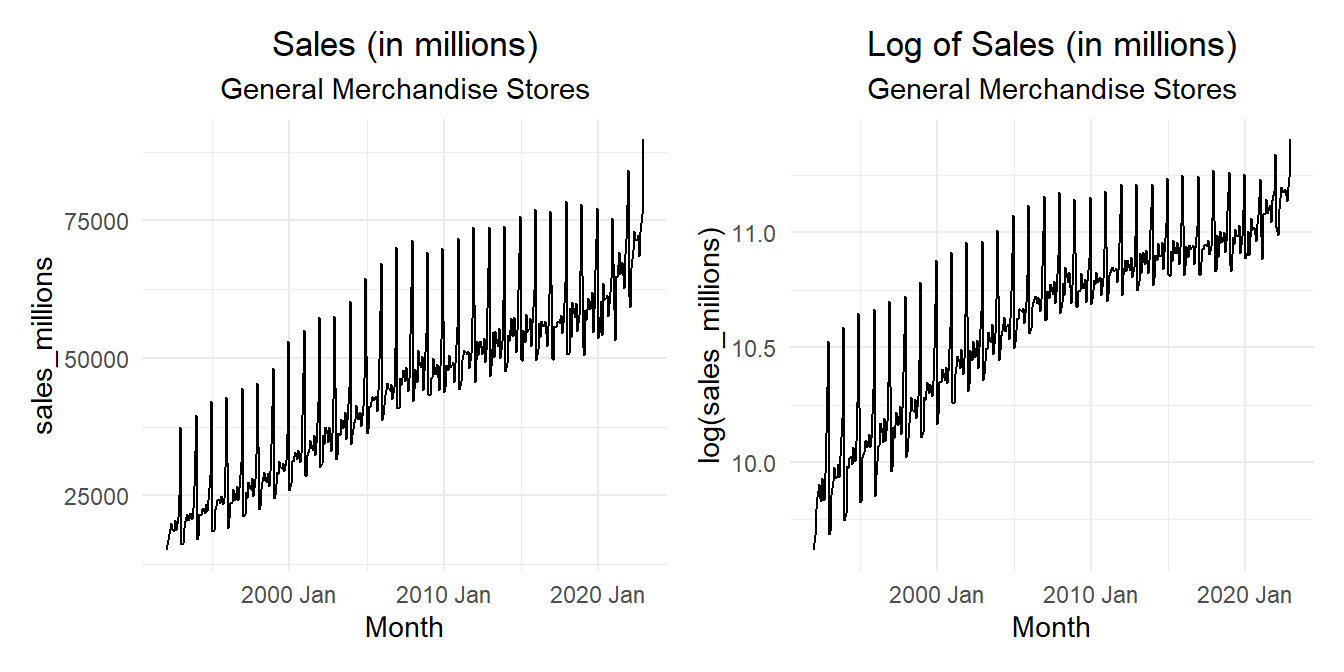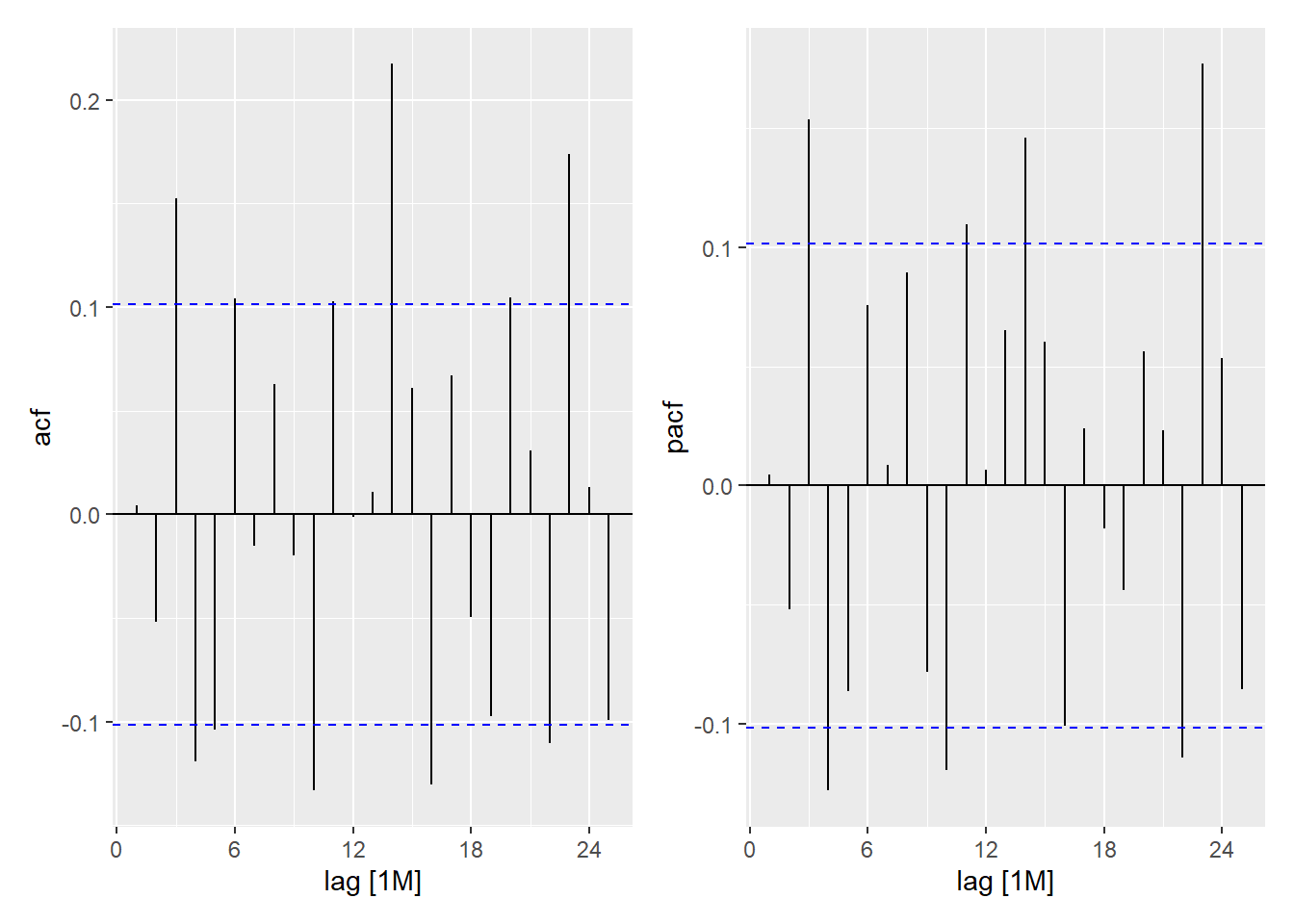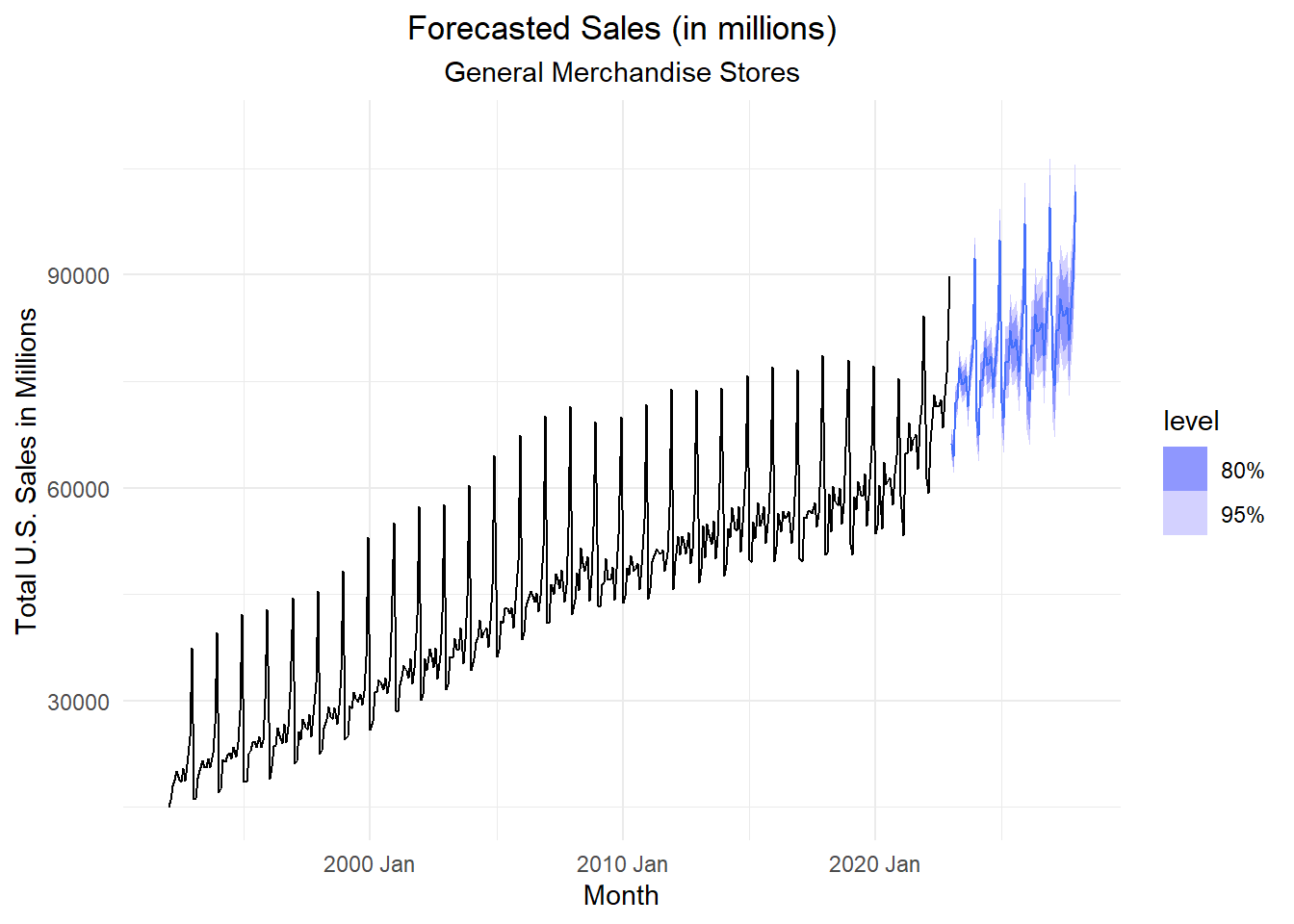Recall that lag \(s\) differencing will remove a linear trend, however if there is a linear trend, differencing at lag 1 will introduce an AR process in the residuals. If a linear model is appropriate in a, say, quarterly series with additive seasonals, then the model could be \[
x_t = a + bt + s_{[t]} + w_t
\]
where \([t]\) is the modulus operator, or \([t]\) is the remainder when \(t\) is divided by \(4\). Another way to view this is to note that for a quarterly time series, \([t] = [t-4]\).
If we apply first-order differencing at lag 4, we get \[\begin{align*}
\left( 1 - \mathbf{B}^{4} \right) x_t
&= x_t - x_{t-4} \\
&= \left(a + bt + s_{[t]} + w_t \right) - \left(a + b(t-4) + s_{[t-4]} + w_{t-4} \right) \\
&= \left(a + bt + s_{[t]} + w_t \right) - \left(a + b(t-4) + s_{[t]} + w_{t-4} \right) \\
&= 4b + w_t - w_{t-4}
\end{align*}\]
This is an \(ARIMA(0,0,0)(0,1,1)_4\) process with constant term of \(4b\).
If we apply first-order differencing at lag 1 and then do the differencing at lag 4, we get the following process: \[\begin{align*}
\left( 1 - \mathbf{B}^{4} \right) \left( 1 - \mathbf{B} \right) x_t
&= \left( 1 - \mathbf{B}^{4} \right) \left( x_t - \mathbf{B}x_t \right) \\
&= \left( 1 - \mathbf{B}^{4} \right) \left[ \left( a + bt + s_{[t]} + w_t \right) - \mathbf{B} \left( a + bt + s_{[t]} + w_t \right) \right] \\
&= \left( 1 - \mathbf{B}^{4} \right) \left[ \left( a + bt + s_{[t]} + w_t \right) - \left( a + b(t-1) + s_{[t-1]} + w_{t-1} \right) \right] \\
&= \left( 1 - \mathbf{B}^{4} \right) \left[ \left( s_{[t]} + w_t \right) - \left( -b + s_{[t-1]} + w_{t-1} \right) \right] \\
&= \left( 1 - \mathbf{B}^{4} \right) \left( b + s_{[t]} - s_{[t-1]} + w_t - w_{t-1} \right) \\
&= \left( b + s_{[t]} - s_{[t-1]} + w_t - w_{t-1} \right) - \mathbf{B}^{4} \left( b + s_{[t]} - s_{[t-1]} + w_t - w_{t-1} \right) \\
&= \left( b + s_{[t]} - s_{[t-1]} + w_t - w_{t-1} \right) - \left( b + s_{[t-4]} - s_{[t-5]} + w_{t-4} - w_{t-5} \right) \\
&= \left( s_{[t]} - s_{[t-1]} + w_t - w_{t-1} \right) - \left( s_{[t]} - s_{[t-1]} + w_{t-4} - w_{t-5} \right) \\
&= w_t - w_{t-1} - w_{t-4} + w_{t-5}
\end{align*}\]
This represents an \(ARIMA(0,1,1)(0,1,1)_4\) process without a constant term.





